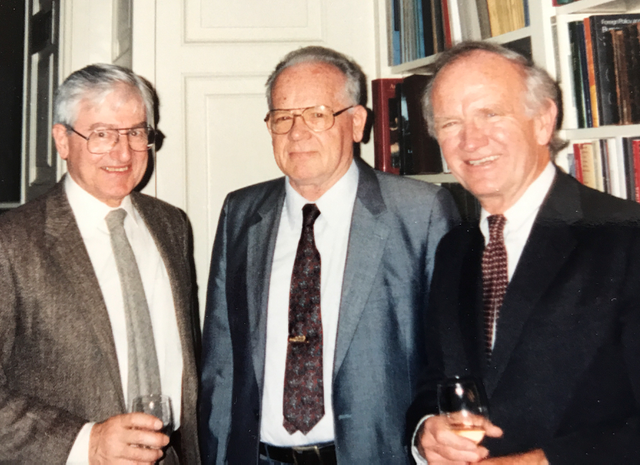Gunnar Thornton was a nuclear physicist and engineer that served in the Special Engineer Detachment (SED) at Los Alamos and on Project Alberta in Tinian. His father, Jens Thorton, was an electrical engineer employed by Stone & Webster engineering firm during the Manhattan Project
Thornton was recruited into the Manhattan Project straight out of Harvard. At Los Alamos, Thornton worked on the Special Engineer Detachment as an assistant to Commander Francis Birch, testing the performance of plutonium for future use in the “Fat Man.”
In Los Alamos, Thornton met Val Fitch and taught him how to ski. In his interview, Fitch mentioned the social advantage that skiing gave him: “Many of the famous physicists were also skiers, like [Enrico] Fermi, [George] Kistiakowsky, you name them, they were probably on the ski slopes with us. I probably had more interaction with these famous people on the ski slopes than I did in the laboratory.”
In May 1945, Thornton arrived in Tinian as a member of Project Alberta, to prepare for the attack on Japan. Thornton appears in the footage from Peter Jennings’s 1995 film, Hiroshima: Why the Bomb was Dropped, pushing the bomb onto the Enola Gay.
At the end of the war, Thornton returned to Los Alamos to develop the Hydrogen bomb. He was placed in charge of one of the overhead planes during the tests at Bikini Atoll in the Pacific.
Thornton left Los Alamos to pursue a master’s degree in engineering at Tufts. He was hired by the Fairchild Engine and Airplane Corporation to work on the Nuclear Energy for Propulsion Aircraft project (NEPA). Thornton continued to work as a nuclear consultant for the project after it was transferred to the General Electric Company. The project was eventually canceled in 1963 and Thornton relocated to Schenectady, New York under the title of Special Services engineer for GE. He developed GE’s nuclear reactor program that focused on selling reactors to ships, submarines, and aircraft carriers.





